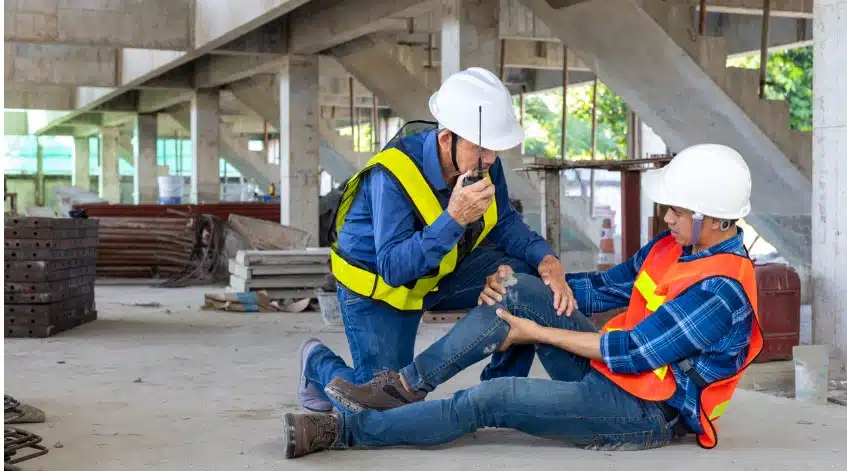Workplace accidents call for a fast, organized communication strategy to keep things under control and protect both employees and the company’s reputation. It’s smart to have a clear plan with designated response teams, step-by-step communication, and ongoing training—so when something does happen, people respond with both accuracy and empathy. Getting this right cuts down on confusion, keeps rumors at bay, and helps maintain trust when it matters most.
When an accident actually happens, people expect quick, honest updates. Employees want clear guidance; stakeholders want to see accountability and consistency. Laying out procedures ahead of time not only supports everyone involved but also makes it easier to stay compliant with the law and resolve things more smoothly. And if workers need help managing benefits after an injury, reaching out to experienced workplace injury professionals is often a solid move.

Critical Steps for Effective Crisis Communication in Florida
After a workplace accident, acting quickly and clearly is key to reducing harm and keeping trust intact. Every step should have clear roles and communication lines, so everyone from first responders to outside partners knows what’s happening and when.
Immediate Incident Assessment and Notification
As soon as something goes wrong, the first job is to assess what happened—how bad it is, who’s hurt, and where the hazards are. The safety officer or team needs to gather this info fast and accurately.
Notification protocols should already be in place, covering who gets alerted—onsite first responders, the company’s emergency team, and so on. That way, help arrives quickly and efficiently.
Details like the time, location, injuries, and current status should be documented carefully. This info becomes the backbone for all further communication and action.
Coordinating With Emergency Response Teams
Working smoothly with emergency response teams is crucial for dealing with immediate threats and keeping everyone safe. The company’s liaison should be ready with clear instructions, directions, and any site-specific risks when responders show up.
One person should stay in close contact with outside teams, sharing updates as things change and making sure everyone’s on the same page. This includes securing the area and giving medical teams what they need.
Good coordination here really does make a difference in keeping people safe and avoiding further problems.
Internal Communication Protocols for Employees
Employees need to hear the facts—promptly and clearly—to keep anxiety down and stop rumors before they start. The crisis team should use whatever channels are set up: group texts, emails, internal platforms, whatever gets the word out fast and reliably.
Updates should cover next steps, safety measures, and any changes to normal routines or site access. It’s important to encourage calm and avoid speculation.
Regular briefings help build trust and show that leadership is in control, which goes a long way during recovery.
External Communication With Stakeholders
Clients, regulators, media, and the community all expect honest, consistent updates. A spokesperson should deliver statements that match what’s being told internally—accurate, timely, and transparent.
Key points: acknowledge the incident, explain what’s being done right now, and reaffirm the company’s commitment to safety and compliance. If something is misstated or released too soon, it should be corrected as quickly as possible to maintain credibility.
Open lines of communication help keep stakeholder confidence up and protect the company’s reputation during tough times.
Building a Comprehensive Communication Plan for Workplace Accidents
A solid communication plan should cover coordination with local support systems, be ready for unpredictable environmental challenges, and keep messaging consistent across all platforms. This helps get clear, timely info to everyone who needs it, which is critical during a workplace incident.
Integrating Community Services and Resources
It’s wise for companies to build formal relationships with local emergency responders—fire, medical, police. These connections mean faster help and smoother info exchange when something happens. Mapping out community resources, like counseling services, is also important for supporting employees and families.
Protocols for reaching out to these services should be laid out in the plan. Training sessions help employees know who to contact, cutting down on delays in a crisis. Tapping into community networks also shows responsibility—especially in areas prone to industrial accidents or heavy labor.
Planning for Natural Disasters and Severe Weather
In Florida, you can’t ignore hurricanes and storms. Safety protocols need to reflect these risks. The communication plan should spell out warning signals, evacuation routes, and shelter details for these situations.
Reliable communication methods—mass text alerts, emails, PA systems—are a must to keep everyone informed, no matter the weather. There should be backup channels, too, in case the usual systems go down. The plan also needs to explain how to safely restart operations after the event, with inspections and updates, so everyone stays in the loop.
Ensuring Message Consistency Across Channels
Keeping messaging consistent across all platforms helps avoid confusion. Whether it’s email, social channels, the company intranet, or even face-to-face updates, what you say should be clear, to the point, and—let’s be honest—checked with legal before it goes out. Nobody wants extra headaches.
It’s smart to have a few people actually allowed to speak on behalf of the company, and to have some ready-to-go statements on hand. That way, everyone—inside and outside—gets the sense that things are under control. Regular updates can tamp down rumors and show you’re not hiding anything, even if the news isn’t always great.
Storing drafts and responses in one spot makes it way easier to keep everyone on the same page. If you’re looking for more specifics, crisis communications templates are worth a look—they’re more useful than you’d think.





